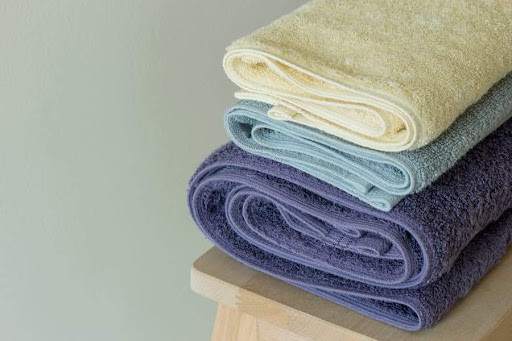Choosing cotton towels for your home or business involves a critical analysis of materials, functionality, and personal choice. Cotton vs. microfiber requires trading comfort, durability, and absorptivity against one another to decide which is best for your needs. T & A Textiles Wholesale Towels provides superior choices in both materials for companies needing mass buys. Eight main distinctions between cotton and microfiber cotton towels are discussed in this guide to assist you in making a wise choice based on your unique demands. Knowing these differences guarantees you choose cotton towels that provide maximum performance and value, whether you give swift drying or opulent softness priority.
Contents
Dry speed and absorbency
Because of their superfine synthetic fibres, microfiber cotton towels are absorbency superstars that may contain several times their weight in water. This makes them perfect for car use, gyms, or salons where quick liquid absorption is critical. Though absorbent, cotton towels operate more slowly, a feature many people value for after-shower use. With a softer feel, high-quality cotton kinds like Egyptian or Turkish provide remarkable water retention. Though some users find the artificial fabric less comfy against skin than natural cotton, microfiber’s fast-drying quality is helpful in humid areas or often-used situations.
Long-Term Use and Durability
Whereas microfiber will break down more quickly in heat drying, good cotton towels will last years, only getting softer with every wash. They keep a constant texture. Whereas microfiber needs soft treatment to maintain its moisture-wicking characteristics, cotton resists bleach and strong cleaners more. Though high-thread-count options help to reduce it, cotton is first impacted more by pilling. Better resistance to fading in sunshine makes microfiber perfect for outdoor or poolside use. Buying in bulk guarantees cost-effectiveness without compromising quality in business contexts where frequent replacements are needed.
Preferred Textures and Comfort
Especially in the heavier GSM weights, microfiber’s natural cotton fibres provide a silky, luxurious touch that has popularised cotton as a bath towel choice. Ideal for spot cleaning or recreational sports use, microfiber provides a clean, light feel. While newer microfiber blends have less scratchiness, cotton remains the comfort standard for most. While microfiber’s nonabrasive, quick-dry quality is appreciated by athletes, sensitive-skinned individuals such as myself prefer organic cotton. It depends on whether you appreciate softness above all else or ease.
Care and Maintenance Requirements
No fabric softeners, low-heat drying, and prevention of oils clogging its fibres are all required for microfiber. Cotton is more forgiving, able to withstand conventional detergents and occasional bleach. While cotton blends easily with other linens, microfiber attracts lint and needs separate washing. Both gain from air drying to lengthen life. While homes could favour cotton’s simpler care, companies with a lot of laundry turnover might choose microfiber’s quick drying.
Bacterial Resistance and Hygiene
Popular in the cosmetics and medical sectors, microfiber’s dense weave inherently fights against germs more effectively than cotton does. Cotton does, however, allow higher-temperature washing for more thorough cleaning. Microfiber’s fast-drying quality helps to inhibit mildew in humid surroundings. Special antimicrobial treatments are offered in both materials for sectors with stringent hygiene regulations.
Environmental Effect
Though conventional farming uses much water, cotton is biodegradable, especially organic types. Though often longer with appropriate maintenance, microfiber made from synthetic substances raises questions about sustainability. To reduce environmental effects, eco-conscious consumers should look at recycled cotton or microfiber alternatives.
Cost and Value Over Time
Though high-quality cotton towels could cost more, they give longer life; microfiber is typically cheaper up front. Bulk buys help companies lower per-unit costs on both products. To find the optimum value, weigh beginning investment against projected lifespan.
Optimal Scenarios
While cotton excels in comfort-focused applications like bath and spa use, microfiber shines in sports, cleaning, and quick-drying situations. Many houses and companies choose a mix of cotton for bathrooms and microfiber for practical needs to reap the advantages of both.
Conclusion
Your requirements, whether you give absorptive, comfort, or ease of care top priority, determine the microfiber vs. cotton argument. For active usage, microfiber provides unsurpassed functionality; for relaxation, cotton provides timeless luxury. Choosing cotton towels that exactly fit your life or company demands depends on an analysis of maintenance, durability, and environmental impact. Usually, a careful mix of both types of materials offers the perfect balance, so maximising comfort and performance helps you to be ready for every event.
